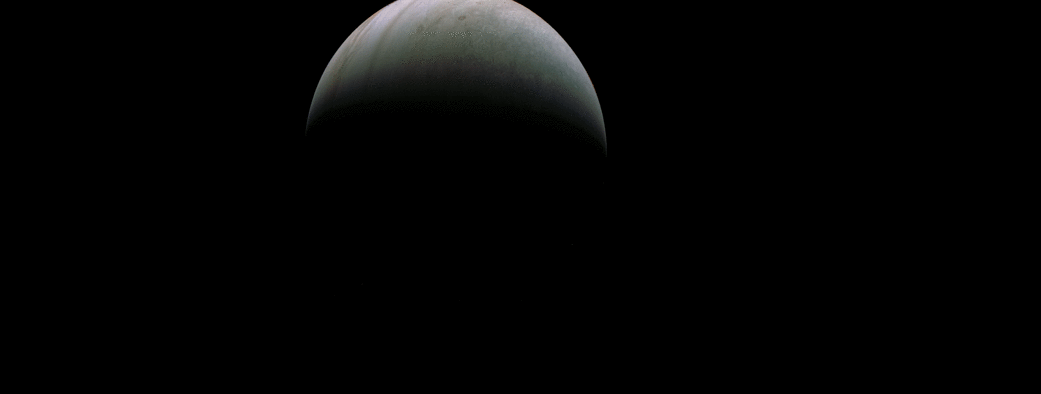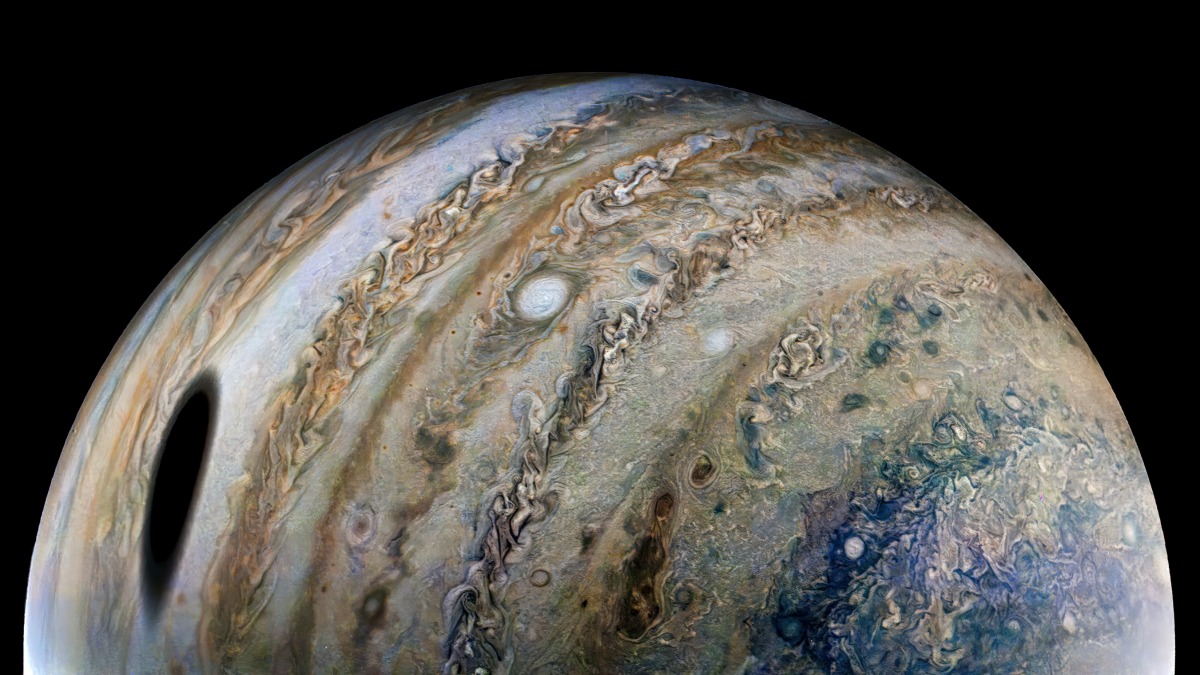Jupiter is a whirling world in stunning (and woozy) footage from Juno spacecraft
The spacecraft passed within 2,050 miles (3,300 kilometers) of the colorful cloud tops on April 9.

Hang on tight as you watch this new footage of Jupiter.
This sped-up view shows the perspective of NASA's Juno spacecraft as it flew just 2,050 miles (3,300 kilometers) above the gas giant's cloud tops on April 9. This was Juno's 41st flyby above the radiation-spewing planet, during which the spacecraft soared at a top speed of 131,000 mph (210,000 km/h) relative to Jupiter.
"Citizen scientist Andrea Luck created this animated sequence using raw JunoCam image data," NASA officials wrote in a statement Friday (May 27).
Related: Juno snaps stunning photos of crescent Jupiter and Ganymede
That's more than seven times faster than the speed of the International Space Station orbits Earth and about five times faster than the crewed Apollo missions were traveling as they left Earth for the moon, NASA officials said in the statement.
The colorful imagery was created from the JunoCam instrument's raw images, which officials upload to an image processing gallery that allows citizen scientists to add their insights to the raw data.
While Juno's initial main target has been Jupiter, in January 2021 NASA authorized an extension of the mission's mandate to focus a little more closely on the planet's four large moons, especially Ganymede, Europa and Io. Juno will run until September 2025, assuming it remains in good health.
Get the Space.com Newsletter
Breaking space news, the latest updates on rocket launches, skywatching events and more!
"With the extended mission, we will answer fundamental questions that arose during Juno's prime mission while reaching beyond the planet to explore Jupiter’s ring system and Galilean satellites," principal investigator Scott Bolton, of the Southwest Research Institute in San Antonio, said in a NASA statement when the extension was announced.
Radiation will likely be the mission's main threat as it attempts to continue its work for the next three years, but as long as Juno is active, it will serve as a scout for future missions at Jupiter, the largest planet in the solar system.

In the 2030s, for example, NASA's Europa Clipper and the European Space Agency's JUICE mission (Jupiter Icy Moons Explorer) plan to visit Jupiter moons directly.
The new James Webb Space Telescope will also examine the giant planet from afar during its forthcoming Cycle 1 set of observations. Webb's work will add to years of data collected under the Hubble Space Telescope's Outer Planet Atmospheres Legacy program, which seeks to study the gas giants of the solar system at least once every Earth year.
Follow Elizabeth Howell on Twitter @howellspace. Follow us on Twitter @Spacedotcom and on Facebook.
Join our Space Forums to keep talking space on the latest missions, night sky and more! And if you have a news tip, correction or comment, let us know at: community@space.com.

Elizabeth Howell (she/her), Ph.D., was a staff writer in the spaceflight channel between 2022 and 2024 specializing in Canadian space news. She was contributing writer for Space.com for 10 years from 2012 to 2024. Elizabeth's reporting includes multiple exclusives with the White House, leading world coverage about a lost-and-found space tomato on the International Space Station, witnessing five human spaceflight launches on two continents, flying parabolic, working inside a spacesuit, and participating in a simulated Mars mission. Her latest book, "Why Am I Taller?" (ECW Press, 2022) is co-written with astronaut Dave Williams.









